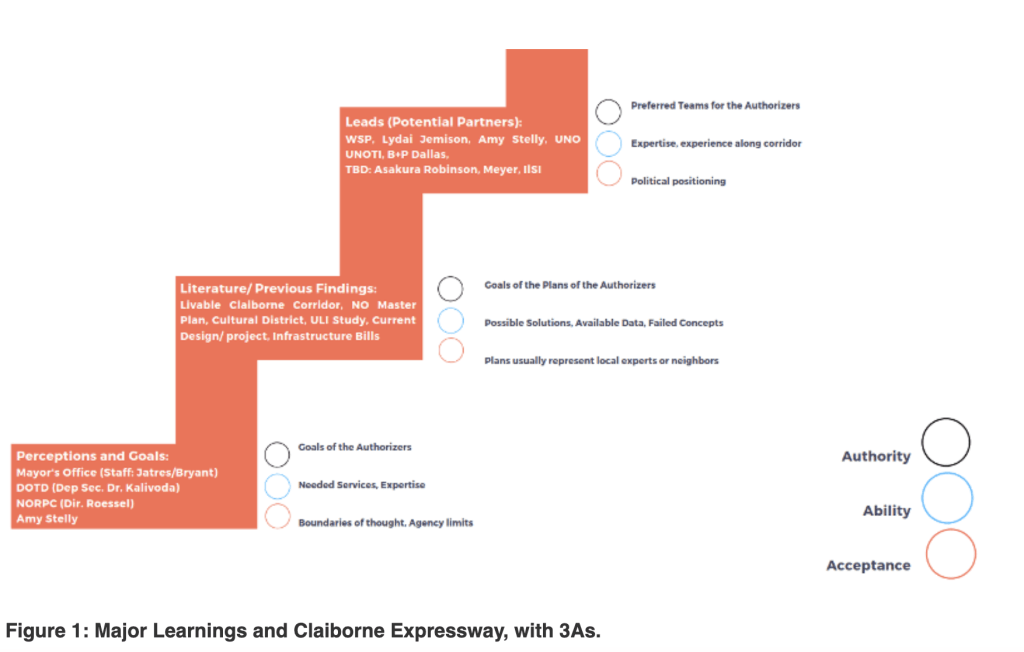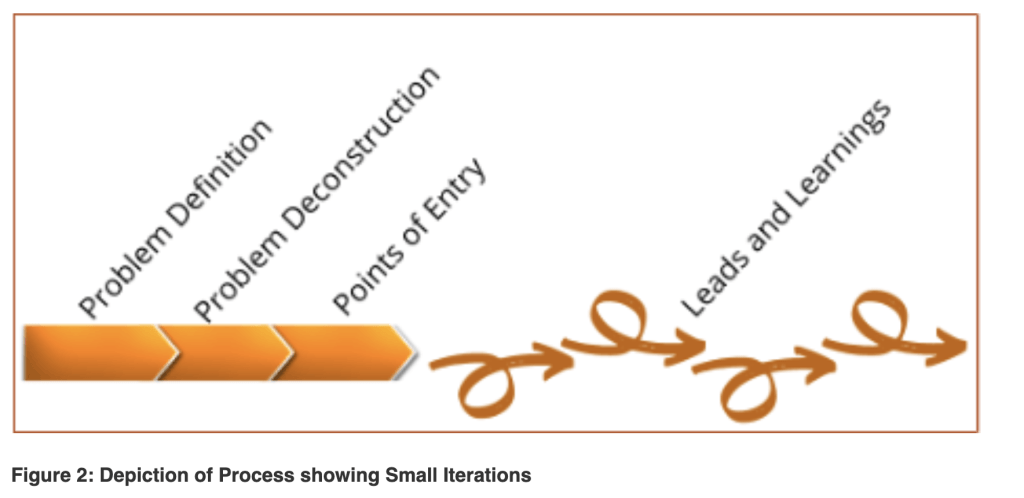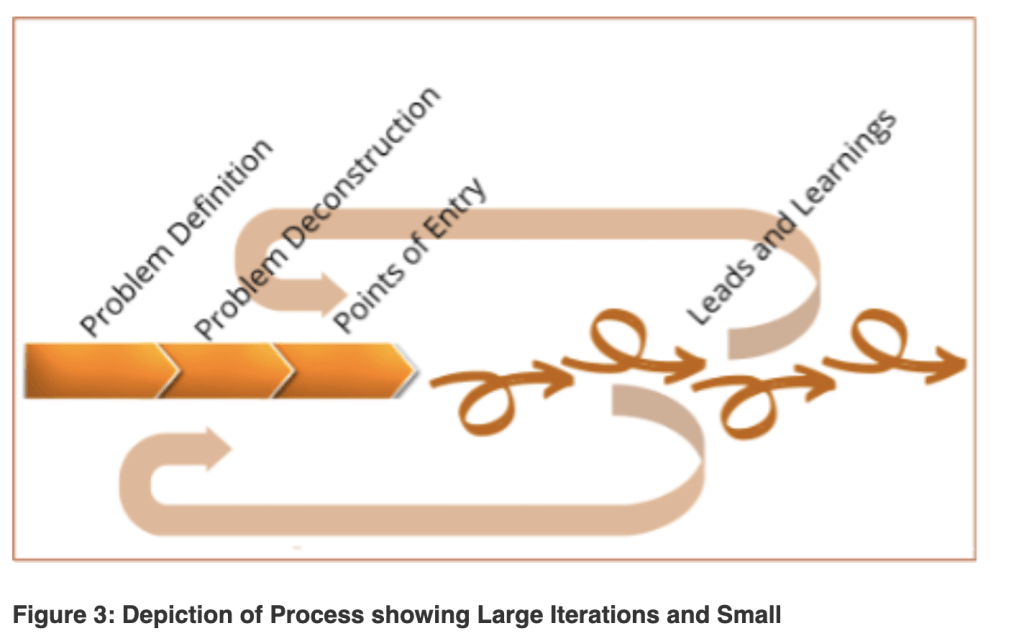Guest blog by Derek Chisholm, IPP 2021
The Implementing Public Policy (IPP) course attracted my attention as it seemed to focus on providing direct, hands-on means of implementing public policy. Successful public policy, in my experience, is much more dependent on implementation than on the passage of initial policy legislation, especially when that legislation is general or aspirational in nature.
A. Selecting the Problem
My initial focus was the Complete Streets Policy. By the fourth week, I had changed my focus to a specific project with Complete Streets and many other implications. The problem was that streets had been built for decades with overwhelming attention paid to providing capacity for automobiles with street design and operations that left behind the pedestrians, bicyclists, differently abled, and transit users.
My focus shifted, partly due to the Problem-Driven Iterative Adaptation (PDIA) exercise on capacity triple ‘A’ Change Space analysis. There was little “space” for me to act on Complete Streets policy with the State of Louisiana within the timeframe of this course. I was already actively engaged in the revisions to the City of New Orleans Complete Streets Policy. The process was yielding mature results already. So I decided there was little need to start anew at the Problem Definition stage of PDIA. I therefore chose to work on a closely related problem, but one that was more tangible, less developed, and still begging for a solution.
The new problem that I focused on results from an elevated interstate highway built through the center of a healthy, lower-income, black neighborhood in New Orleans. Removing that highway is likely to receive federal funding. And I hope to be involved, as a Consultant, leading the project. The corridor is the Claiborne Expressway (a portion of the Interstate 10 corridor).
B. Applying PDIA (Problem Driven Iterative Adaptation)
I began with problem definition and kept returning to it iteratively, throughout the course. The problem definition I first developed focused on the structure of the expressway. It evolved into the disruption caused by the expressway. And now, many weeks later, I characterized it as the suite of challenges that remain from the initial disruption. Using the Ishakawa diagrams, I also iteratively deconstructed the problem, identifying component parts. Interestingly, when thinking of the problem as the structure, the other fishbones included the different adverse conditions it has caused. When the problem is defined as the conditions, the structure moves to one of the Fishbones, as does its related impacts of noise, air pollution, and disconnected street grids.
After problem definition and deconstruction, I found great value in identifying points of entry using the 3As of Authority, Acceptance, and Ability. The following diagrams shows the first three major learnings for my team and the exploration of the Claiborne Corridor. These occurred somewhat sequentially, although the efforts overlapped considerable. New conversations resulted in new research to be done. The research in turn identified other parties with whom we needed to meet. The three major groups of leanings are the Authorizers’ Perceptions, the Literature (previous Plans and studies), and the development of a Teaming strategy informed by an understanding of the current and previous actors. In below, each of these significant steps in the PDIA approach is then re-assessed for its contribution to my teams Authority – denoted with the black circle, Acceptance with orange circles, and Ability with blue circles.

A considerable portion of the learning about Claiborne resulted from the literature review. Since members of my team had completed portions of the literature review, it provided me the opportunity to engage others, share the mission related to the corridor, and forced me to articulate some elements of the PDIA approach.
As with most important endeavors, this one also needed a team to be successful. I started with the staff in my organization AECOM. I spoke with my internal authorizers and shared with them some elements of my approach. As a result, I was able to make this a documented pursuit, established a budget for the studies, and began a series of activities like those undertaken at AECOM for other major pursuits. Typical preparation for a major pursuit (i.e. a public contract competition) incudes reading previous plans. But this time, we did so with some of the tools provided in the PDIA lessons. I specifically asked my staff to look for positive deviance and latent solutions. Also, as we reviewed the literature, I asked the staff to look for data and wisdom that could help us better understand the three As.
Specifically, I asked for the team to look for the following:
- Authorizers: Which Plans were funded by which agencies, were the Plans embraced, adopted, and implemented?
- Acceptance: Which concepts were found to be realistic and desirable to the surrounding neighborhood? Which concepts were found to be realistic and desirable to the major agencies?
- Ability: The staff was asked to look for two things—the abilities of the related agencies and the abilities of the team we are building. Do the agencies and other conditions allow for the specific Plan recommendations to occur? For example, removing the Expressway could be achieved with sweeping redevelopment at higher densities with a major new investment in high-capacity transit. But fiscal and other constraints don’t allow the agencies to be able to consider that approach. Secondly, what abilities does my team need to be successful? Do we need a transit specialist, do we need an arts program specialist, etc.?
With this direction, the staff reviewed the following literature.
- 1976: Claiborne Avenue Design Team Report
- 2006: Claiborne Avenue Corridor Preliminary Redevelopment Study
- 2008: City of New Orleans Master Plan 2030
- 2010: Restoring Claiborne Avenue: Alternatives for the Future of Claiborne Avenue
- 2010: The Livable Claiborne Communities Study
- 2017: Cultural Corridor Plan
- 2011: New Orleans Claiborne Avenue Redevelopment Study
The staff provided short descriptions. However, more important sharing happened in a two-hour workshop in which each staff person outlined the major elements of their respective plans.
3. Reflections from the IPP course
The IPP course taught us many lessons. I learned many new techniques and different approaches. Some of these techniques fit together quite well. Lessons from the first half of the course provided many of the fundamentals for successfully application of a Problem-Driven Iterative Adaptation (PDIA) System.
Some of my classmates think of PDIA as a toolbox. It is of course, a toolbox of techniques and lessons. Each of these may be used at different times through a process, with different iterations trying different tools. But I also found it helpful to lay-out a methodology for applying these techniques. As with any public policy challenges, there is a need to define the problem, deconstruct it, and then find entry points to engage with the problem.

Like following a recipe, PDIA is a sequence of actions taken. But within that sequence there are iterations. The process is neither linear – which leads to a plan and control process, nor entirely circular. Rather, the process in linear with multiple iterations at different scales.

The major iterations are important. They provide great means of onboarding new team members and starting with fresh perceptions of the problem itself. Even with a small team, iterating back to the problem deconstruction is very helpful. Even when the problem definitions changes little, the nuanced understanding will deepen with each iteration.
By analogy the instructions in a recipe to ‘spice to taste’ is seldom completed by ‘planning’ the exact amounts of seasoning, adding them and then being confident the taste is what was desired. Rather, a cook adds some salt and other spices and tastes it, adds some more and tastes again, repeating the process sometimes with others tasting as well.
4. Guidance for new students
Choose your problem wisely. In the course, you will be introduced to the Triple A method of assessing your own ability to engage the problem. The three A’s refer to Authority, Acceptance, and Ability. These are important elements to assess because it is important to choose a policy problem that you can work on in your ‘real’ life. You, or more importantly your team, must have the Ability as well as a modicum of Authority to address the problem.
Prepare for diligent, experiential applications and enjoy the process. It works!
This is a blog series written by the alumni of the Implementing Public Policy Executive Education Program at the Harvard Kennedy School. Participants successfully completed this 6-month online learning course in 2021. These are their learning journey stories.
